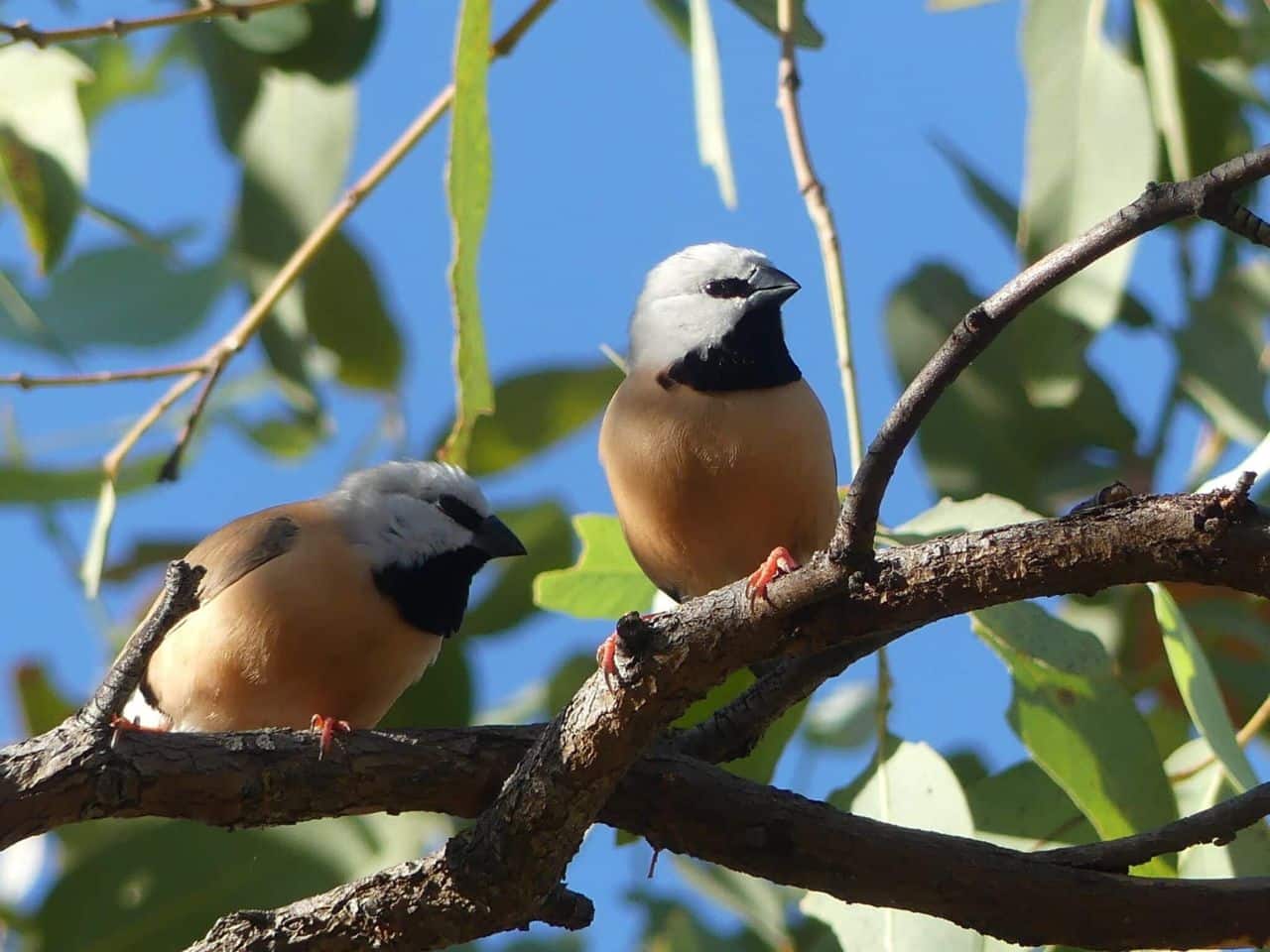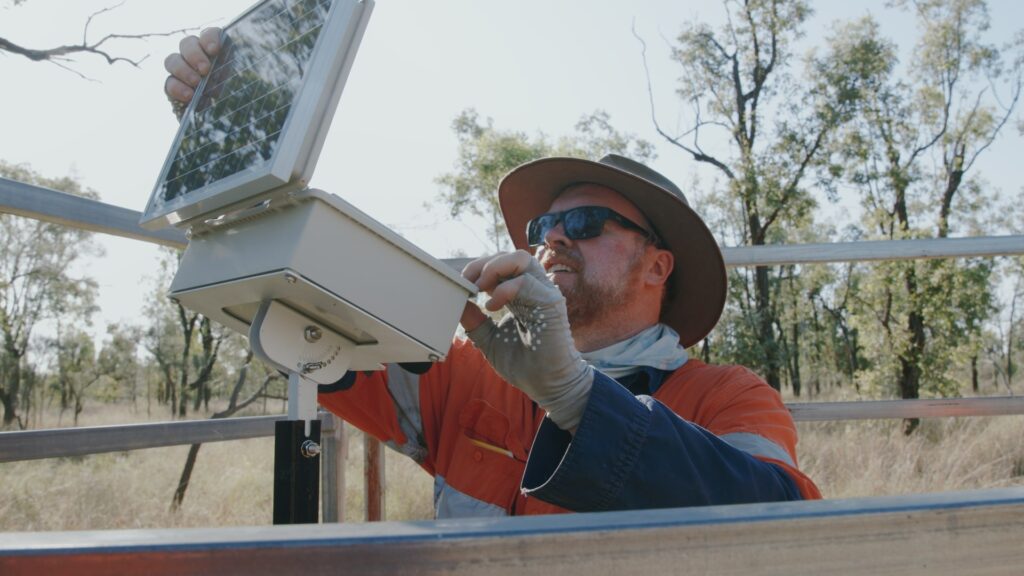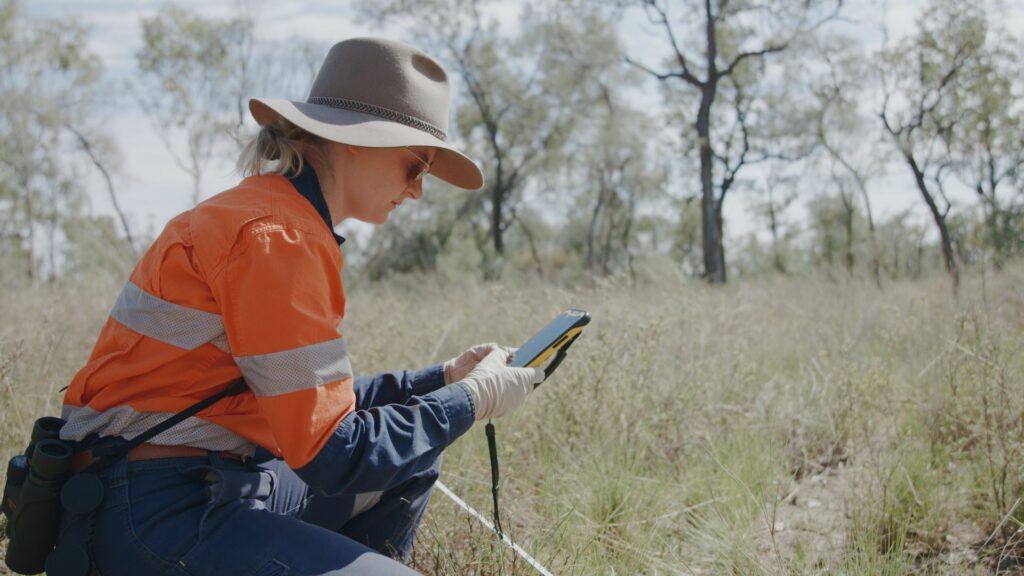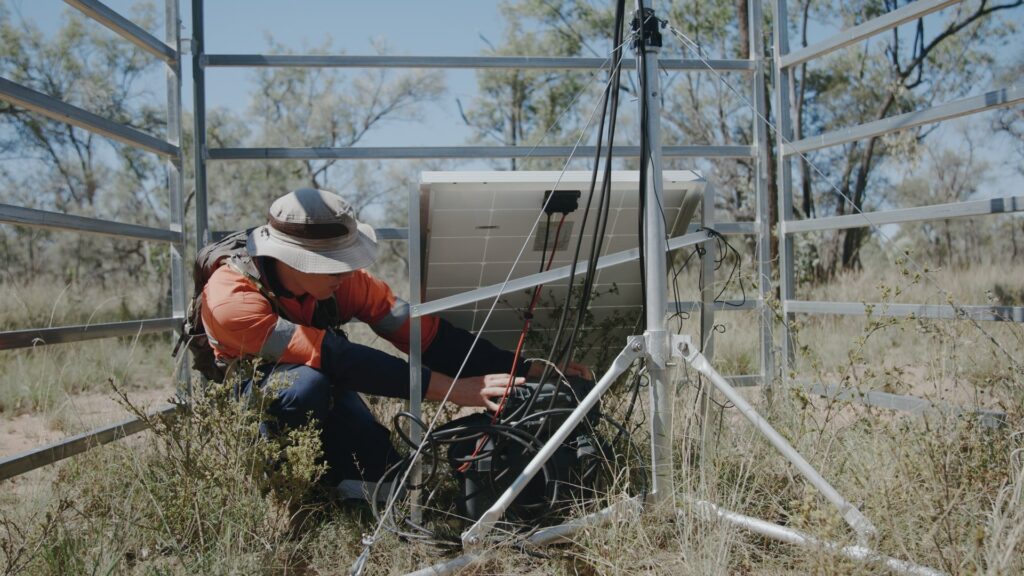Research into Habitat Improvements for the Black-throated Finch
The Galilee Basin, in the Desert Uplands region, contains one of the two remaining stronghold populations for the southern subspecies of the Black-throated Finch (BTF). The species has faced a decline in population throughout their historical range, formerly extending to northern New South Wales, due to agriculture and land use changes. The Black-throated Finch is now considered an endangered species under national and state legislation.
In conjunction with a mine development in the Galilee Basin in central-north Queensland, E2M has been spearheading a research project aimed at enhancing the habitat of a key Black-throated Finch population.
The Black-throated Finch research will run for a total of five years, onboarding the support of Griffith University to develop a scientifically robust research program.
An expert-led team
Co-ordinated by Chief Science Officer and lead ecologist Brad Dreis and senior ecologist John van Osta, the Black-throated Finch research has been ongoing since early 2020, with both Brad and John furthering these insights through separate PhD projects.
Brad is focused on furthering our scientific knowledge of the Ecology of the Endangered Black-throated Finch (southern) in the Desert Uplands Bioregion, Queensland. Meanwhile, John is developing industry-leading techniques to investigate the movement of the Black-throated Finch within their habitat.
Surveys of the Black-throated Finch, their habitats, and their behaviours are conducted three times a year to account for seasonal changes. They identify the species’ home range and movements, population dynamics, foraging and breeding habitat requirements. From these studies, strategies for fire, water, diet and grazing management will also be implemented.
The research team includes Chief Technology Officer, Cameron Davey, responsible for designing our data management systems and processes; Principal Ecologist, Dean Jones, and Senior Ecologist, Chays Ogston, who are fully accredited to handle this threatened species.
Explore the scientific papers:
Collaboration with Griffith University
The Black-throated Finch research will run for a total of five years, onboarding the support of Griffith University to develop a scientifically robust research program. The insights gained from this study will be used to advise on the Black-throated Finch’s critical habitat and breeding requirements and to assist with managing the remaining populations.
Technology-driven ecology
Several state-of-the-art technologies and professionally developed analytical procedures have enabled our team to conduct their research across challenging and difficult to access landscapes, ensuring round-the-clock data collection for the Black-throated Finch.
Radio tracking
For a bird weighing as little as the Black-throated Finch, about 15 g, radio tracking provides a highly effective method to track an individual’s movements. Through radio tracking, we have investigated foraging behaviours, nest selection and their relationship with water. In addition to several manual handheld trackers. 27 fixed radio towers capable of detecting birds within 800 metres and at up to 15-second intervals have provided a detailed assessment of Black-throated Finch movement within the Study Area.
Bioacoustic recorders
We have deployed ten solar bioacoustic recorders to allow long-term monitoring of seasonal changes in Black-throated Finch behaviour and occurrence. A call detection model has been developed through state-of-the-art machine learning methods. The model allows us to find and calculate the frequency of Black-throated Finch calls in extensive field recordings (up to 10 years of back-to-back recordings!).
Habitat modelling and remote sensing
The characteristics of the Black-throated Finch’s habitat and geographical range are important to the success of this research. Therefore, habitat models were crucial to the prediction of habitat suitability and assisted in the experimental design.
A habitat model for the Black-throated Finch was created in specialist software, through the input of all available records for the species and mapping layers of environmental variables that may influence the species’ presence. We used remotely sensed data to map the landscape’s fire history, water sources and types of vegetation.
Motion cameras
Stationed at water sources frequented by the Black-throated Finch, motion cameras capture the movements of individual colour-banded birds. The information collected from these cameras is also important in understanding the drinking behaviours of the endangered species.
DNA analysis
E2M is collaborating with specialist genetic researchers to use the DNA of Black-throated Finch to understand their population structure at local and regional scales.
To determine the diet of Black-throated Finch, we are using cutting-edge DNA techniques to map the DNA contained within crop and scat samples to the DNA of plant species the species may eat.
Seed sampling and nutritional analysis
By analysing grass seeds consumed by the Black-throated Finch, its diet, nutritional requirements, and foraging tendencies are determined.
Developing plans from insights
While this comprehensive study is still underway, much insight has already been gained from our research to date. Our technology driven approach allows for a continuous presence on-site and aids in driving efficiency around the collection of data where manual assessments lack the same level of effectiveness and accuracy.
Contact The Professionals at E2M
Thinking about your next project? Get in touch with us today to discover our focus on delivering balanced environmental outcomes through a commercial lens.










